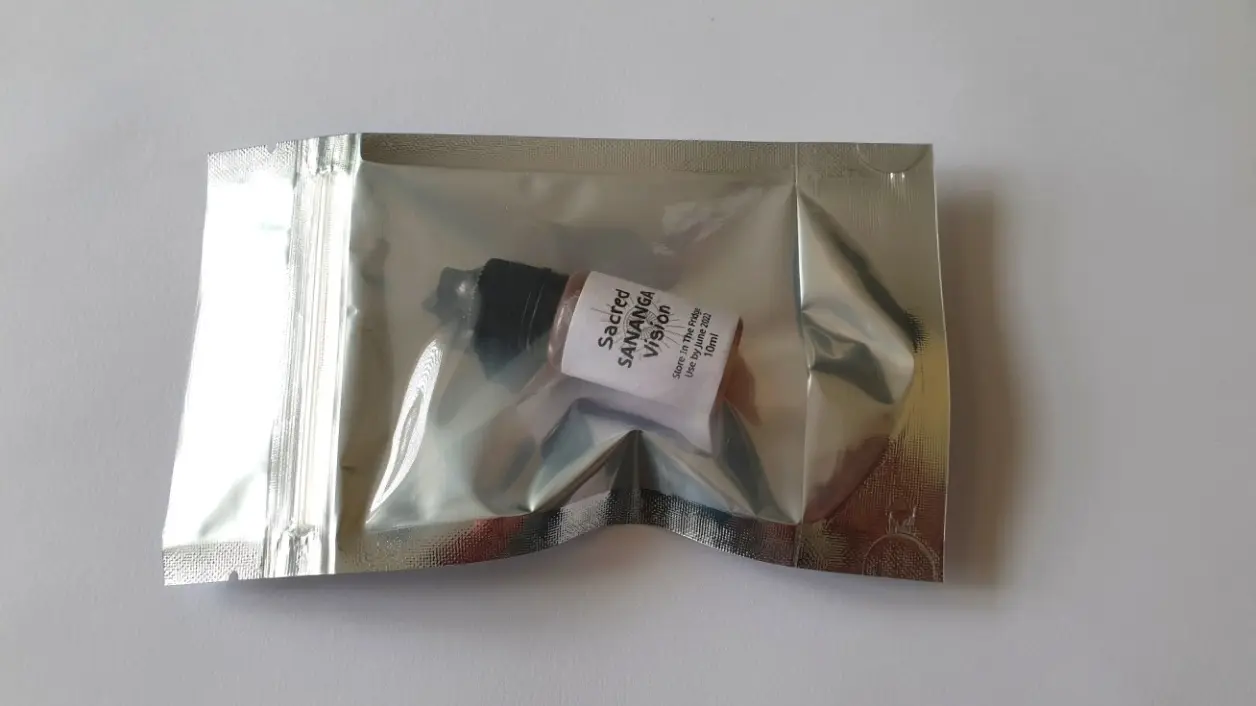Sananga #
| Common Nomenclature | Tabernaemontana Undulata |
| Street & Reference Names | Sananga |
| Major Active Compound | Unconfirmed |
| Indigenous Source | The Amazon |
| Form | Liquid |
| RoA | Eyes |
| Personal Rating On Shulgin Scale | +* |

SUBJECTIVE EXPERIENCE #
Sometimes used as a precursor to ayahuasca ceremonies, sananga is primarily known for its use as a tribal Amazonian eye medicine, and in particular to sharpen night vision. However, the Internet is also awash with claims regarding psychoactivity and spiritual use, hence its inclusion in this book.
For example, katukina.com, states that “This sacred and potent medicine is used for healing physical and spiritual ailments, by clearing the mind and energies and gaining a complete new way of perception and focus.”, and psychedelictimes.com claims that “These powerful eye drops have a healing power that’s more energetic than physical, and that has the capacity to increase spiritual insight in the minds of those who use it.”
Some sources go further still, with nextlevelsmart.nl offering “On an energetic level, Sananga helps to open the inner vision, the third eye, visions, activates the pineal gland, erases all spiritual confusion, frees negative thoughts and deeply cleanses the entire aura from the inside out.”
In terms of administration there are ample warnings of intense stinging and burning on application. This apparently subsides after a few minutes, and is often regarded as being an important part of the process. It’s not something, however, that I relish.
Regarding dose, one or two drops per eye are usually referred to, with one often cited as being more than sufficient.
Finally, on the issue of set and setting, general advice is to find a quiet and peaceful location and to relax or lie down with meditative intent. The intensity allegedly fades into the longer term benefits after 15 minutes or so.
Having obtained my supply via a known vendor on eBay I am ready to go. I decide to undertake the exercise on my bed, and lie down with the already opened bottle. I squeeze gently with the nozzle over my third eye (forehead) until a drop falls. I quickly repeat over my right eye and then left eye.
It stings and burns as anticipated and my closed eyes water despite my attempts to retain the fluid. I blink and a few tears run down my face on to the pillow. There is a rush of blood to my head and a humming sensation but all quickly passes and I lie still and quiet for 5 minutes or so.
As I get myself up and walk downstairs vision appears a little refreshed, as probably normal for any eyewash. I suspect placebo may be a factor here as well. Fifteen minutes after launch I feel fairly normal, possibly (or not) with a minor reset in play, as I often find with an intense experience (e.g. with nitrous).
An hour later I have had a short walk. Vision could be sharper or I could be looking for it. I feel neutral. Overall, it is inconclusive.
I repeated the exercise at 4:30pm the following day. First came the sting, then the burn, after which I sought to meditate into the headiness and focus on my breathing. I soon relaxed and after 5 minutes I returned to my office. I noticed subsequently that I was less stressed and more serene. Whether this was due to the process itself or the sananga I cannot say, but my disposition was slightly altered.
The same sort of aftermath as yesterday ensued, and I note that I felt no ill effects or any subsequent issues with my eyeballs.
I should also note the possible relevance of location and circumstance. I do feel that I am cheating somewhat by testing this without ceremony and outside indigenous surroundings. These factors do contribute to the nature of spiritual and psychoactive experiences, and an important ingredient may well be missing.
Note: I am very well aware that at the start of this book I mocked the very idea of applying any drug via the eyeball. Given the context this was with good reason and I would stress that sananga is a sole exception.